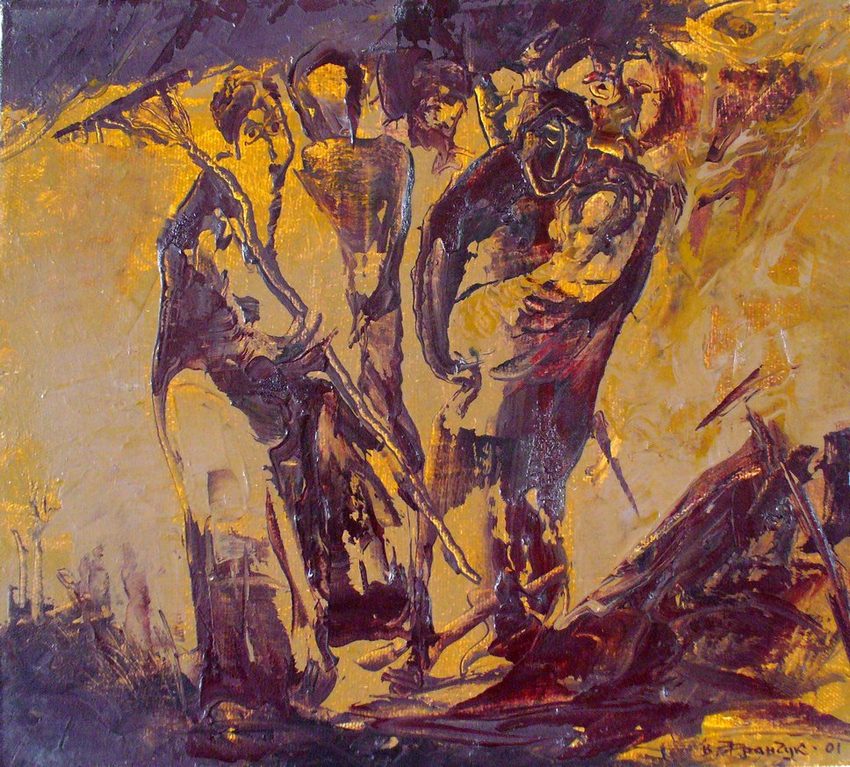and were presumed lost.
Sacred Altar and Pectoral Crosses
On the left - archival photos from the 1930s, when the treasures were still in Kiev (monograph and catalogue published by Ukrainian scholar Hryhoriy Poliushko); on the right - modern photos taken from the website of the State Historical Museum in Moscow.
Sacred Mitres and Crowns
Excited by his find, Tymur Bobrovsky wrote the following explanation on his FB page:
“It was an unexpected discovery, but invaluable for Ukrainian culture and history. For two days, I literally “sat” in my computer and scrolled through the catalogue of the Moscow State Museum.
First and foremost, I’d like to thank Dmytro Vortman, cartographer and scientific editor of The Encyclopedia of the History of Ukraine, for the link to the website (see the colour photos). Second, to compare these modern photos with the old ones, I referred to the photos retrieved by Ukrainian scholar Hryhoriy Poliushko (see the black-and-white photos from the 1930s).
I hope that my findings will be useful to everyone who cares about Ukrainian history and heritage. This museum probably holds even more treasures than we can imagine!”
In 2001, Hryhoriy Polyushko published a monograph entitled The Lost Treasures of the Lavra Museum (Втрачені скарби лаврського музею)
, where he listed the valuables that had been confiscated in the 1930s from the Kyiv-Pechersk Historical and Cultural Reserve and moved to the State Precious Metals and Gems Repository of the USSR. These were mainly priceless liturgical items requisitioned in the 1920s from the sacristies of St. Sophia and Assumption Cathedrals in Kyiv, which had been transformed into museums with the advent of Soviet power in Ukraine. The treasures were removed from the Ukrainian church museums and placed in storage under the pretext of “reliable safekeeping”. However, it soon became clear that by the early 1940s most of them had disappeared into Soviet state-owned banking institutions, and only a few items later “surfaced” in different Moscow and Leningrad museums.
Sacred Medallions
In his monograph, Hryhoriy Polyushko identified eleven of the 119 items exhibited in the Moscow State Historical Museum as part of the treasures confiscated from the Kyiv Pechersk Lavra by the Soviet authorities. Poliushko tried to establish the circumstances of their journey to and arrival at the Moscow State Museum, but to no avail; official inquiries from Ukraine’s Lavra Museum to Moscow in 1999-2000 were met with denial:
“... the records of the State Historical Museum in Moscow contain no information on the receipt of artefacts from the Kyiv Pechersk Lavra.”
Hryhoriy Poliushko was convinced that other priceless objects listed in his monograph might eventually turn up at the Moscow State Museum.
A few weeks ago, Dmytro Vortman published a link to the website of the State Historical Museum of the Russian Federation, which lists the digitized treasures of the museum - a total of more than 900,000 items listed on 20,000 pages! Using photographs of the items confiscated from the Lavra Museum in the early 1930s (published in Poliushko’s monograph), Bobrovsky looked through the collection of the Moscow State Museum, searching for objects of Kyiv origin. Of the 119 items listed in the 1930s catalogue, Bobrovsky was able to identify 57 “Kyiv” items on the Moscow Museum website, of which at least four dozen were presumed lost.
Sacred Vessels and Utensils
Tymur Bobrovsky has appealed to his colleagues and other Ukrainian scholars to help him continue the search and identify more objects. He believes that it is very important to collect as much information as possible and identify and record each object separately - where it came from, when and how it disappeared, and where it eventually turned up.
In conclusion, if Moscow scholars really do not know anything about the provenance of these treasures (as they once stated in response to Poliushko’s queries), then they should now be duly informed and should acknowledge the origin and history of these priceless objects.























































